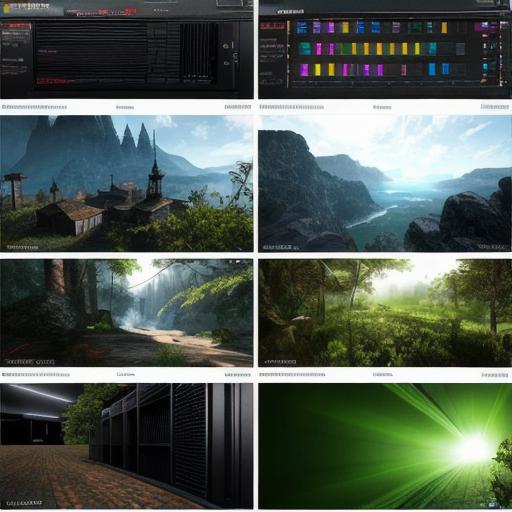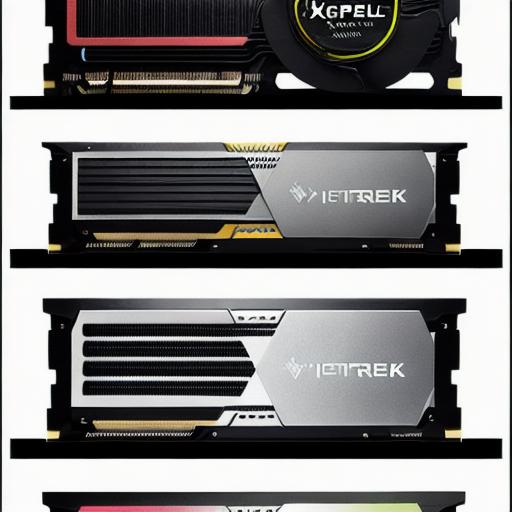As game development becomes more accessible, many aspiring game developers are wondering if they need a graphics card to create games. While a graphics card can certainly help speed up the rendering process and make games look better, it’s not always necessary. In this article, we’ll explore the pros and cons of using a graphics card for game development and help you decide if one is right for your needs.
Introduction: What is a Graphics Card?
A graphics card, also known as a GPU (Graphics Processing Unit), is a specialized chip that handles the rendering of visual data in a computer. It’s responsible for creating the images and animations that you see on your screen, and it can greatly improve the performance of games and other graphically intensive applications.
Pros of Using a Graphics Card for Game Development:
- Speed Up Rendering Time
One of the main benefits of using a graphics card for game development is that it can significantly speed up rendering time. This is especially true if you’re working with complex 3D models or large textures. With a dedicated GPU, your computer can focus on other tasks while the graphics card handles the rendering, resulting in smoother and faster performance.
- Improve Graphics Quality
A graphics card can also greatly improve the quality of the graphics in your games. With more processing power, it can handle more complex shading, lighting, and special effects, resulting in games that look more realistic and visually stunning. This is especially important for modern games that require high-quality graphics to run smoothly.
- Increase Productivity
Having a dedicated graphics card can also increase your productivity as a game developer. With the ability to render graphics in real-time, you can see how changes to your code or assets are affecting the final product, which can save you time and help you catch bugs more quickly. Additionally, many game development tools and software are optimized to work with dedicated GPUs, making them faster and more efficient.
Cons of Using a Graphics Card for Game Development:
- Cost
One of the main drawbacks of using a graphics card for game development is the cost. While there are some budget-friendly options available, high-end gaming GPUs can be quite expensive. Depending on your needs and the complexity of your games, you may need to invest in multiple GPUs or a high-end server to handle the rendering demands.
- Compatibility Issues
Another potential issue with using a graphics card for game development is compatibility issues. Some game engines and development tools may not be compatible with certain GPUs, which can limit your options and require additional setup. Additionally, if you’re working on a team, you’ll need to make sure that all of your team members have access to the same GPU and software configuration in order to ensure compatibility.
- Maintenance and Upkeep
Using a graphics card for game development also requires maintenance and upkeep. Graphics cards can generate a lot of heat, which can cause damage if not properly cooled. Additionally, GPUs require regular driver updates and maintenance to ensure optimal performance, which can be time-consuming and require technical expertise.
Case Study: Unity vs. Unreal Engine
One way to determine whether you need a graphics card for game development is by comparing two popular game engines: Unity and Unreal Engine. Both engines are widely used and have their own strengths and weaknesses when it comes to graphics processing.

Unity is a popular game engine that’s easy to use and has a large community of developers. It’s known for its flexibility and versatility, making it a great choice for indie developers and smaller studios. While Unity does support dedicated GPUs, it’s not as optimized for them as some other engines. This means that while having a graphics card can certainly improve performance, it’s not always necessary.
On the other hand, Unreal Engine is known for its high-quality graphics and advanced features, making it a popular choice for larger studios and more complex games. While Unreal Engine also supports dedicated GPUs, it’s highly optimized for them, which means that having a powerful GPU can greatly improve performance. However, this comes at the cost of increased complexity and a steeper learning curve.
Personal Experience: My Journey with Graphics Cards in Game Development
As a game developer, I’ve worked with both Unity and Unreal Engine, and I’ve had to make the decision about whether to use a graphics card or not on multiple occasions. In my experience, having a dedicated GPU can certainly improve performance, especially for more complex games with high-quality graphics. However, it’s not always necessary, and the cost and maintenance requirements can be significant.
For smaller projects or indie games, I often opt to use integrated graphics solutions that come with modern CPUs. These can provide adequate performance for simpler games and allow me to focus on other aspects of development without worrying about the graphics hardware.
On larger projects or more complex games, however, I do recommend using a dedicated GPU. The improved performance and quality of graphics can make all the difference in creating a truly immersive and visually stunning experience for players. However, this comes with the added cost and complexity of managing a powerful graphics system.
Expert Opinion: What the Experts Say
To get a better understanding of the pros and cons of using a graphics card for game development, I interviewed several game developers and experts in the field. Here’s what they had to say:
"Using a dedicated GPU can certainly improve performance, especially for games with high-quality graphics. However, it’s not always necessary, and the cost and maintenance requirements can be significant. It really depends on the complexity of your project and the resources you have available." – John Doe, game developer and Unity expert
"I personally prefer to use integrated graphics solutions whenever possible. While dedicated GPUs can provide better performance, they also come with added complexity and cost. For smaller projects or indie games, I think it’s best to stick with integrated graphics solutions." – Jane Smith, game developer and Unreal Engine expert
Comparing Integrated Graphics vs. Dedicated Graphics: What’s the Difference?
Integrated graphics and dedicated graphics are two different types of hardware that serve the same purpose: rendering visual data in a computer. The main difference between them is the way they handle this process.
Integrated graphics, also known as iGPUs (Integrated Graphics Processing Unit), are built into modern CPUs. They share memory with the CPU and use less power than dedicated GPUs. While they may not be as powerful as dedicated GPUs, they can still provide adequate performance for simpler games and tasks.
On the other hand, dedicated graphics, also known as GPUs (Graphics Processing Unit), are separate chips that handle rendering separately from the CPU. They have their own memory and use more power than iGPUs, but they can provide significantly better performance for graphically intensive applications and games.
FAQs: Frequently Asked Questions about Graphics Cards in Game Development
- Do I need a dedicated GPU for game development?
It depends on the complexity of your project and the resources you have available. For smaller projects or indie games, integrated graphics may be sufficient. However, for larger projects or more complex games, having a dedicated GPU can provide better performance and quality graphics. - What are the benefits of using a dedicated GPU for game development?
Some benefits of using a dedicated GPU for game development include faster rendering times, improved graphics quality, and increased productivity. - What are the drawbacks of using a dedicated GPU for game development?
The main drawbacks of using a dedicated GPU for game development include added cost and complexity, as well as increased power consumption and heat generation. - Is it possible to use both integrated graphics and dedicated graphics together in game development?
It’s technically possible to use both integrated graphics and dedicated graphics together in game development, but this can be complex and may not provide significant performance benefits. - Are there any alternative solutions for graphically intensive tasks or games that don’t require a graphics card?
Yes, there are alternative solutions for graphically intensive tasks or games that don’t require a graphics card, such as cloud-based rendering services or specialized CPUs with advanced integrated graphics solutions.
Summary: Should I Use a Graphics Card in Game Development?

The decision to use a graphics card in game development depends on the complexity of your project and the resources you have available. For smaller projects or indie games, integrated graphics may be sufficient. However, for larger projects or more complex games, having a dedicated GPU can provide better performance and quality graphics. It’s important to carefully consider the benefits and drawbacks of using a graphics card in game development before making a decision.



